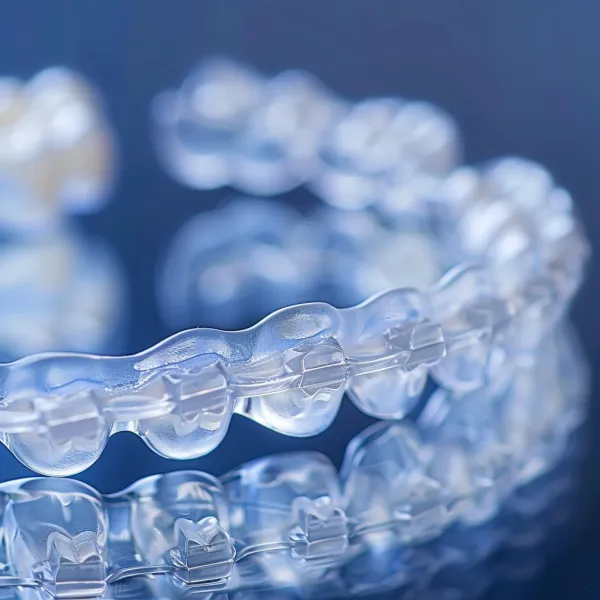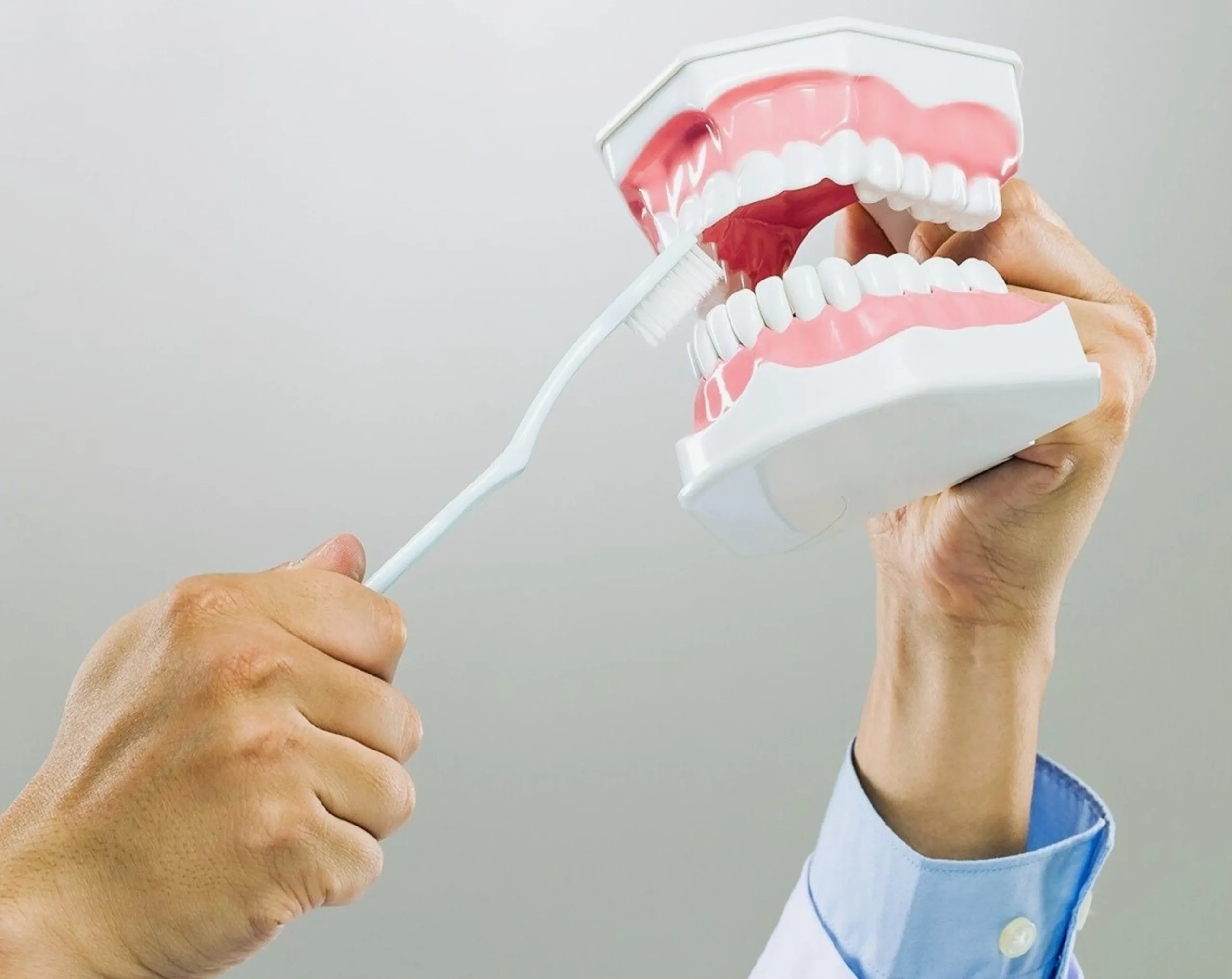Invisalign has quickly become a popular teeth-alignment treatment for teenagers and adults, slowly replacing traditional metal braces. Everyone feels much more confident with a big, bold smile and straight teeth. While you see braces more often, you might not have seen Invisalign as frequently and why? Well, it’s practically invisible.
Invisalign is an orthodontic alignment treatment that straightens dentition using clear plastic aligning trays. You wear these clear aligners over your teeth like retainers for a specialist-determined amount of time.
How Does Invisalign Work?
Invisalign doctors make these clear trays from a flexible plastic known as SmartTrack, a specially patented thermoplastic material only designed for Invisalign. Specialists create custom sets by carrying out 3D scans of the wearer’s dentition and gumline. The patient either imprints their dentition into a clay-like substance to create a mold or creates a digital imprint using x-rays and highly detailed photos.
Like traditional metal braces, Invisalign works by pulling the teeth into a straighter form. As the teeth conform to their new form, wearers graduate to their next tray level in the set. At the end of the orthodontic treatment, wearers can boast of a straightened smile.
Invisalign vs. Retainers
Invisalign seems to have a lot in common with retainers. They are both clear orthodontic trays used to aid with straightening teeth. Invisalign is used in the fundamental process of straightening and adjusting the form of the teeth. Retainers are typically used after taking out their braces. Retainers help to keep the effects of the braces to prevent orthodontic relapse.
Both Invisalign and retainers are custom-made orthodontic trays but the former is made to apply pressure to each tooth and gently move them into place over time. Unlike Invisalign, retainers are a lifelong commitment after taking out your braces. You will most likely have the same set until they are worn out.
Invisalign is less flexible in terms of use. While you only have to wear retainers at night, Invisalign is most effective when you wear it for at least 22 hours a day. You should only take out your Invisalign when you want to eat and brush your teeth.
Invisalign Attachments
Invisalign attachments are small button-like bits connected directly to your teeth. These attachments are special built-in power ridges designed to aid more complicated modifications. They are mostly colored and are made from composite resin. Each attachment has a specific design to deal with various movements and help keep the aligners securely in place.
Not every Invisalign user needs attachments. Their addition depends solely on the dental issue being addressed and the tooth movement involved in the treatment.
Attachment installation begins with the doctor treating your teeth with a specialized gel. This gel helps the attachments stick to your teeth. After a little while, the dentist takes off the gel and rinses your teeth. Using a bonding agent, the dentist places a template aligner onto your teeth using a bonding agent. This aligner has spaces into which the attachments fit.
They load the attachments into the aligner spaces with some light pressure, and the dentist cures and hardens the process with a specialized light. They remove the template aligner at the end of the process, leaving the attachments behind.
Attachments may hurt upon installment due to the aligner applying pressure on them. Over-the-counter pain relief medications like Tylenol can help with this pain and discomfort. You can read more regarding Invisalign reviews in https://www.consumeraffairs.com/health/invisalign.html
How Long Does Invisalign Take?
Every person is different, including their body’s response to certain treatments. The duration of the correction process varies from person to person and how complicated the issue being addressed is.
On average, Invisalign users can start seeing significant changes as early as six months into the treatment. Total treatment time ranges from 12 to 18 months. Factors affecting the duration of Invisalign treatment time include:
The Condition being addressed: Spacing, crowding, an overbite, and an underbite could make alignment more complicated. Thus, taking more time.
Age: Younger individuals have teeth that are more malleable to transformation and realignment. The older the patient, the more challenging it is to move the teeth around. This could cause a longer treatment time with Invisalign.
Commitment: Invisalign specialists advise wearers to keep them in for maximum effect at least 20-22 hours a day. Depending on a wearer’s diligence with their treatment, treatment time could either take longer or shorter.
This also translates to getting new trays as soon as it’s time to move on. Doctors have set schedules to check and switch trays. Missing appropriate switching schedules will delay results. There is a review related to Invisalign in Smile Prep.
What Conditions Can Invisalign Fix?
The conditions Invisalign can effectively address include:
Overbite: Upper teeth project outward and rest over the lower teeth. Slight overbites are common with most people. Excessive overbites can cause severe discomfort and pain.
Crossbite: One or more upper teeth bite into the lower teeth due to a misaligned jaw.
Underbite: Lower teeth project outward and come to rest over the upper teeth.
Open bite: Upper and lower teeth do not meet.
Spacing and Gap Teeth: Spacing issues between the teeth.
Crowded Teeth: Upper teeth bite inside the lower teeth due to a misaligned jaw.
Misaligned Baby Teeth
Misaligned Permanent Teeth
What Conditions Can Invisalign Not Fix?
Conditions involving Temporomandibular Joint (TMJ) disorders: Here, Invisalign could escalate this condition, causing pain and worse symptoms.
Tooth Decay or Gum Disease: Patients with these conditions will have a more challenging time treating the problem and maintaining proper oral hygiene with Invisalign.
Complex Malocclusions: Malocclusions define misalignment of the teeth. When present in severe degrees, Invisalign cannot straighten the teeth and even when used, it has much less accurate effects than traditional braces.

Can Invisalign Ruin Your Teeth?
Some Invisalign reviews have revealed that Invisalign can damage teeth. It’s important to note that this mostly happens if you have not followed your dentist’s proper instructions. General ill-treatment of your Invisalign can damage your teeth. This includes drinking fizzy drinks and juices that could get trapped beneath the trays and your teeth.
A popular side effect is teeth demineralization from food or liquids trapped between your teeth and the aligners. Trapped particles can interact with bacteria in the mouth, causing overproduction of acid. This acid eats away at the enamel’s calcium and phosphate components, causing unpleasant white spots to form on the teeth.
Aligners also minimally affect the natural cleansing of teeth. Saliva is a natural cleansing solution for the mouth and a buffer and re-mineralizer. With aligners in place, saliva cannot reach the surface of the teeth to clean, buffer, and remineralize the surface. There is an article related to How to Avoid Demineralization While Using Invisalign.
For Invisalign wearers with poor maintenance practices, plaque could build up inside the Invisalign trays, specially cusp-tips and edges of incisor mold. This causes further teeth damage.
How To Avoid Invisalign Damaging Your Teeth
Demineralization is a major side effect of getting Invisalign. Thankfully, it is preventable with proper oral hygiene. Brushing and flossing are already general practices for keeping your teeth healthy. They are even more critical when you are undergoing Invisalign treatment. Speak with your dentist on keeping up with proper dental hygiene.
It would be beneficial to add a fluoride mouth rinse once a day to your oral hygiene routine. Discuss foods and drinks with your dentist and find out which ones you need to avoid to keep your treatment effective and complication-free.
Always remove your aligners before you eat or drink, and if you cannot, avoid sugary drinks and acidic substances. These include fruit juices, soft drinks, energy drinks, and flavored waters. After eating, thoroughly rinse your mouth with water before reinserting your aligners. Clean your aligners every night by rinsing with lukewarm water and gentle brushing.
Does Invisalign Change Your Face Shape?
Yes. The shape of your teeth is a key contributor to the shape of your face. Invisalign does its work of reshaping your teeth and straightening them. This alteration of your teeth can then remodel your appearance, profile, and face shape.
As it eliminates issues like an overbite, underbite, and spacing, Invisalign will leave slight changes in the shape of your mouth. The soft tissue surrounding and supporting your teeth, such as your gums, cheeks, and lips, will change as well.
What Invisalign cannot do, though, is alter your face shape by altering the shape of your nose. Dentists and Invisalign specialists have debunked this particular Invisalign misconception born from the effect of braces on the upper jaw.
Invisalign, however, can adjust the shape and size of the jaws of younger wearers. In adults, the jawline shape has fully developed and stays fixed.
Is Invisalign A Permanent Fix?
The arrival of Invisalign into the dental treatment space revolutionized alignment science. It is a quicker and more effective way to straighten teeth and correct misalignments than many other approaches.
Even with this impressive feat, Invisalign, like every other orthodontic treatment, is not absolutely permanent. Teeth have their memory system and will always tend to return to their original form and growing pattern.
Immediately after you complete your treatment, the newly attained positions of all your teeth are unstable. They’ll need some time to adjust and keep the results. Your post-treatment routine and maintenance will determine how long your results last.
Do Teeth Go Back To Normal After Invisalign?
Teeth have their own special kind of position memory. After realigning and straightening them, they can and will return to their original form if not properly maintained. As with regular old-fashioned braces, you need to keep the effects of Invisalign treatments by using Invisalign retainers. Retainers prevent your teeth from moving back into place.
You will need to wear your retainers 22 hours per day for the first few months after your Invisalign treatment ends. For about a year post-treatment, your teeth will remain unstable and require constant maintenance with retainers.
After a few months, you will limit wearing your retainers to nighttime. This post-treatment routine is vital to keep your results.
Patients with more severe forms of misalignment are at more risk of relapsing. If you consistently wear your retainers, your results could very well last a lifetime as your teeth will continue stabilizing.
Although Invisalign works faster than braces, the risks of relapse for both methods are relatively the same.
How Much Does Invisalign Cost On Average?
The cost of Invisalign varies depending on various factors like your location, the dentist, and your insurance. On average, treatment costs range from $3,000 to $5,000. The duration of treatment and the complexity of the malalignment issue significantly affect the cost of your treatment. Ultimately, your dentist will determine the actual cost of your treatment.
There isn’t a wide cost margin at this figure between Invisalign and regular braces. Invisalign is also often included in dental insurance. Methods to reduce your Invisalign fee include:
Dental School Discounts: Some dental schools offer their services at a discount because dental students can learn by helping with your treatment.
Health Savings Accounts: HSA allows you to take out pre-tax dollars from your salary. This amount is then put away for emergency costs on health care. You can roll over these funds you set aside if you do not use them. You, however, need to have a high-deductible insurance plan.
Flexible Spending Accounts: Like HSAs, you can use an FSA to take out a certain amount of pre-tax money from your salary. You can then put this money aside for any expenses you incur for healthcare. Unlike HSAs, you cannot roll over unused funds in an FSA.
Payment Plans: Many dentists offer monthly payments plans that help you split the bill into smaller installments. While browsing through Invisalign doctor sites, look out for the payment plan option and find out if you are eligible.
Is Invisalign Right For You?
When deciding if Invisalign is right for you, it is essential to factor in your lifestyle, oral hygiene culture, and dental condition. If you are a teen with malalignment or other conditions, Invisalign is a great orthodontic treatment for you. Parents must ensure that children follow the 20-22 hour daily regime for maximum effects.
For both adults and younger patients, Invisalign is a good option if you are looking for discretion but still visible treatment. Find out if your doctor thinks Invisalign will be capable enough to handle your dental condition.
Invisalign is also a good choice if you want increased flexibility with food, maintenance, and hygiene. Depending on your lifestyle, having Invisalign could be the right fit for you.
Learn About The Invisalign Installment Procedure?
Consultation: To begin your Invisalign treatment, schedule a consultation with your dentist. They will first evaluate your dentition and determine if Invisalign is right for you.
Scanning: the dentist will take 3D images of your teeth, a digital scan of your teeth, and an x-ray of your jaw.
Molding: Your dentist will create a 3D mold of your teeth with the images and scans carried out. They make clear alignment trays using these molds.
Attachments: Before installing the aligners, the Invisalign attachments are first prepared and installed on our teeth.
Aligner Installment: Your aligners remain installed and will remain an essential aspect of your life for approximately 6 to 18 months.
Scheduled Checkups: Although Invisalign requires fewer checkups than regular braces, you will need to see your dentist for checkups. They will examine your teeth’s movement and determine when you need a new tray to accommodate the new shape of your teeth.
Post-treatment refinement: At the end of your treatment, your dentist will thoroughly examine your progress and determine if you need improvement or additional aligners.
Post-treatment retainers: to prevent your teeth from returning to their pre-treatment shapes, your dentists will ask you to wear Invisalign retainers for about a year.
Pros
More Comfortable: Without brackets and metal wires binding your teeth, you will enjoy more comfort with Invisalign’s smooth thermoplastic material.
Facilitate better Gum Health: Invisalign allows you to brush and floss as frequently as you should, keeping your gums healthy and adequately cared for.
Aesthetic Advantage: Invisalign is more or less invisible or less noticeable. Compared to regular braces, they are also a more aesthetically pleasing method of teeth correction.
Flexibility: In the proper sense of the word, your Invisalign treatment is not really flexible. Because you have to keep them in pretty much all the time, being able to remove them when necessary is a plus.
Fewer Mechanical Problems: Regular braces wearers often complain of mechanical issues like brackets and wires breaking or falling off. With Invisalign, you won’t face problems like this.
Fewer Appointments: Invisalign has fewer maintenance issues compared to braces. Visits to the dentist are also much shorter.
Easier Hygiene Routine: It is easier to clean your teeth with Invisalign. You simply have to remove the aligners, clean your teeth, go about your routine as needed, and pop them back in.
Can get lost or broken: this leads to spending more time and money

Cons
Strict Regimen: Invisalign users need to have their aligners in for 20-22 hours a day to get the maximum benefits of the treatment.
Necessary removals at intervals: Invisalign wearers should not eat or drink with their aligners in place. When you want to eat or drink, you will need to take your aligners out to prevent food and liquid from getting into them. This is not always feasible, thus restricting a wearer’s lifestyle and limiting their eating. This is not great for frequent snackers or sippers.
Speaking Issues: At first, saying certain words with your Invisalign may take some practice, and it might feel awkward. In a few days, this awkwardness should be gone, and your speech returns to the way it was.
Soreness: With every removal and resetting of the aligners, you will feel some discomfort and soreness. This affects your lifestyle and diet or food choices.
Reduced effectiveness with Complicated Issues: Invisalign works for almost all teeth setting conditions. However, more complex issues are too challenging for Invisalign treatments. Your doctor would recommend stronger treatment to you if this is the case.
Is Invisalign Better Than Regular Braces?
As always, the treatment plans that work for you are based on your condition and preferences. Invisalign is most applicable for patients who have misalignment issues that aren’t severe.
Clear orthodontic correction treatments like Invisalign can be used by Adults for slightly straightening teeth that aren’t too crooked. If your misalignment issues are not severe, Invisalign is a better option for discreet, flexible correction.
Regular braces are better for people who have severely crooked teeth and malalignment.

Invisalign FAQs
Is There An Age Limit For Invisalign?
There is no age limit for Invisalign. However, the older a patient is, the more challenging it can be to correct the orientation of the teeth. This is because the teeth are harder set and more mature.
Invisalign is a great orthodontic solution for teenagers and adults who want to improve their smiles without interrupting their lives and interfering with their appearance.
Can You Switch From Braces to Invisalign?
Yes. Once your dentist has taken out your braces and determined that you still need a straightening process, you can make the switch from braces to Invisalign.
Can You Use Invisalign if You Have Bridge Work?
Bridgework connects two or more teeth together, and Invisalign aligners move each of your teeth individually. Invisalign might not be effective if you have bridgework done.
How To Clean Invisalign Aligners
Invisalign has a cleaning system that you can purchase separately. However, you can also use a toothbrush and toothpaste to brush and clean your aligners gently. Rinse with lukewarm water and avoid contact with hot water as it could melt the plastic.
What Happens If You Lose or Break Your Aligners?
Immediately inform your doctor and start working on getting another set to continue your treatment.
Can You Use Invisalign To Whiten Your Teeth?
Invisalign is not designed for teeth whitening. Attempts to do so with your aligners could be unsafe and lead to damaging results.
Alternatives For Invisalign
It is a common misconception that Invisalign is the only brand of clear aligners. Other more affordable brands can provide you with the orthodontic solutions you need. Some of these alternatives to Invisalign are less popular, but they have considerably good reviews to back them up.
Most of these alternatives are at-home aligners. You will need to speak to your dentist before taking any of them.
Byte
Byte’s unique selling point is the various treatment plans for customers. You can opt for a short plan, as short as three months, and wear your aligners for 10 hours each night. Byte also offers a for-life plan, Byte-For-Life Guarantee which covers your smile for life. Byte will send new aligners if your teeth become crooked again in the future.
SmileDirectClub
SmileDirectCo offers at-home treatments for dental imaging and straightening services. This brand is especially great because it has many customer-friendly policies and these include a 30-day full refund window and flexible financing options. SmileDirect also offers free teeth whitening services and a Lifetime Smile Guarantee.
AlignerCo
AlignerCo is the most budget-friendly brand of clear aligners when compared to other leading at-home companies. They provide nighttime-only option and a 20-hour daily option so customers can choose based on their lifestyle.
Candid
Candid is the only online transparent aligner company that guarantees orthodontist-only treatments and services. As such, they can handle more severe cases.





